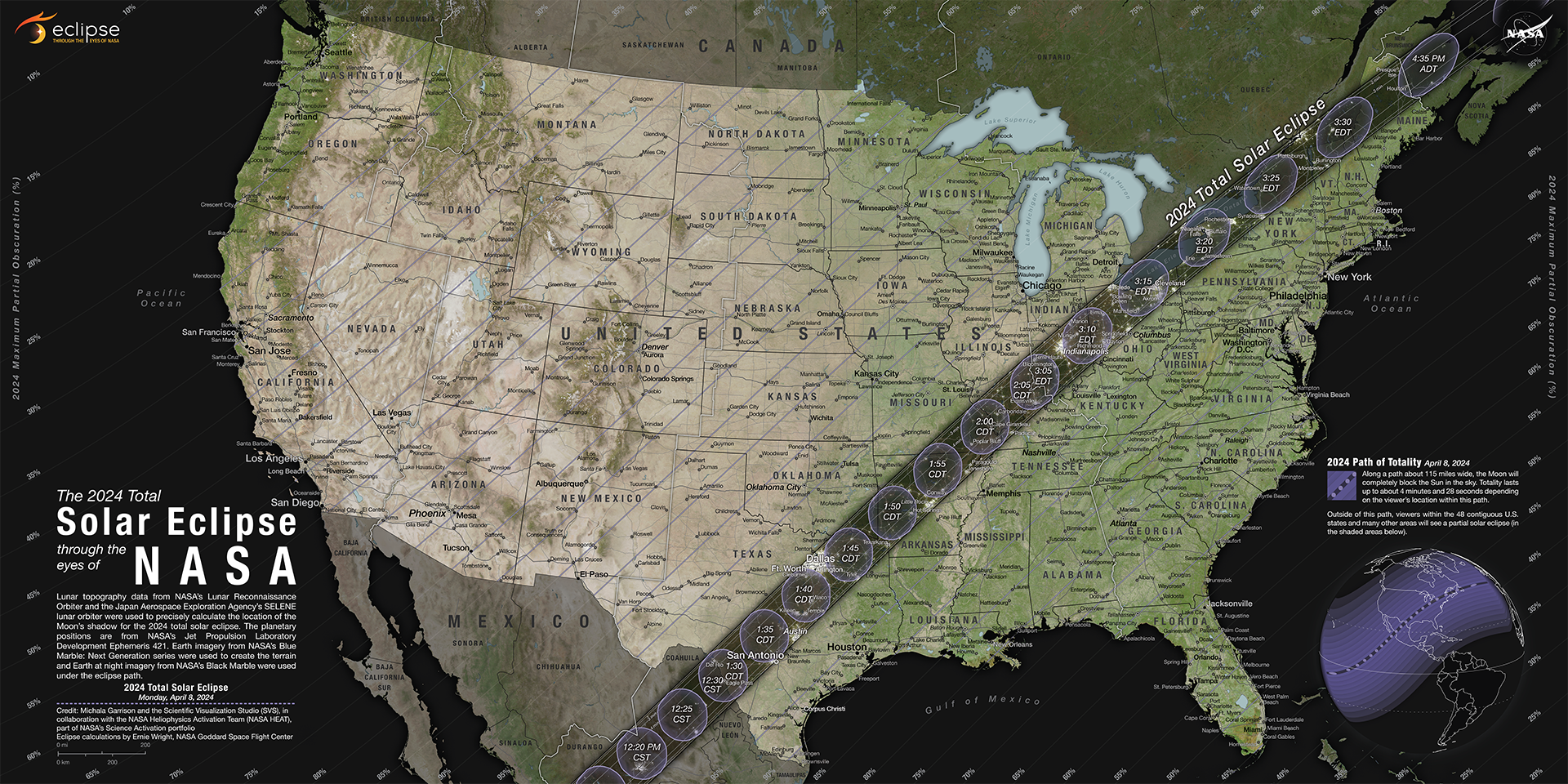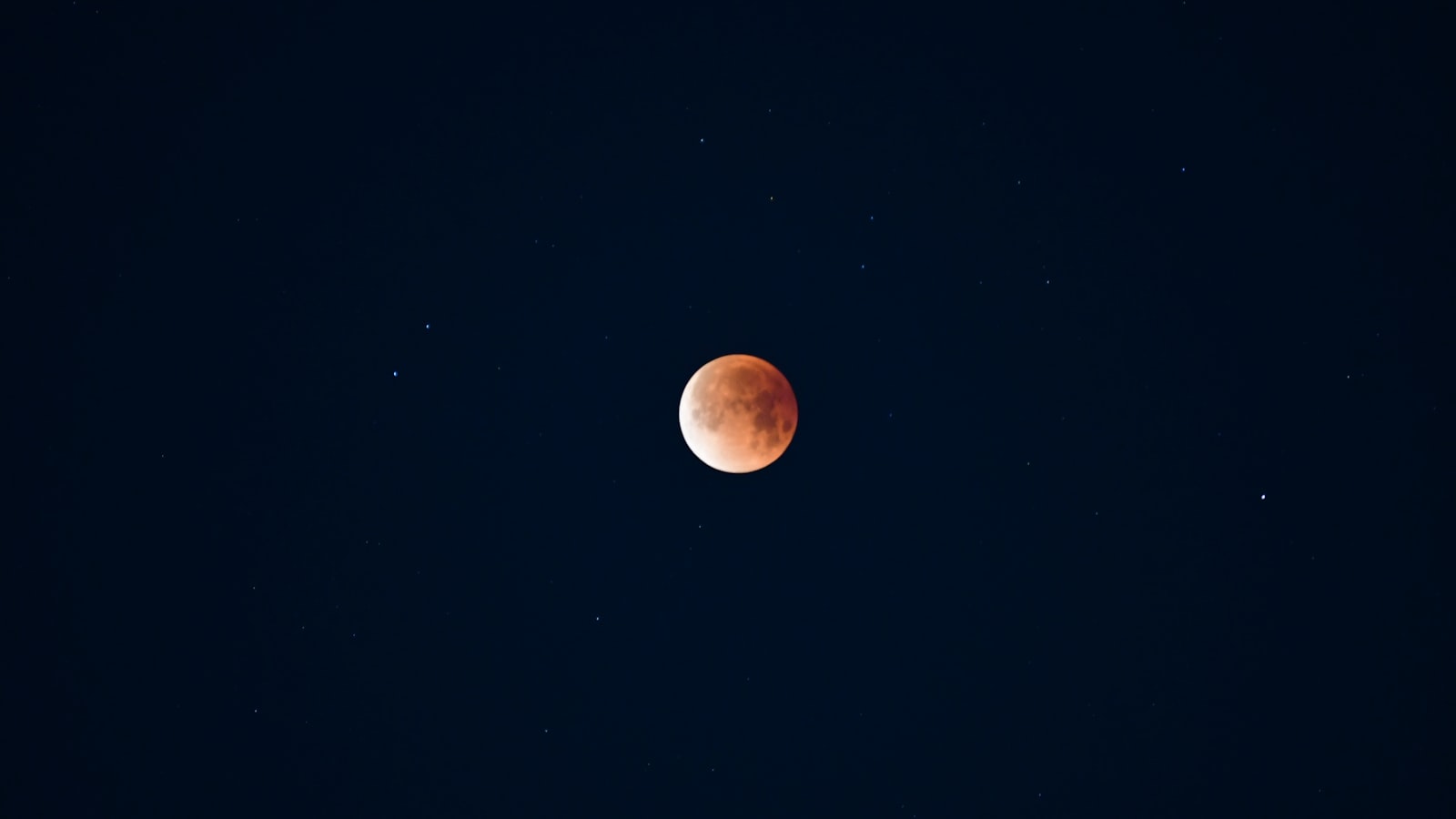The stage is set for a celestial performance that calls for no dress rehearsal. As the natural world subtly dims its lights, a shadow races across the land at thousands of miles per hour. The day morphs into an eerie twilight and wildlife fall silent. It's not a Hollywood blockbuster—it's something far more rare and inspiring—a total solar eclipse.
People from all corners of the globe will gaze upward as the Moon steals the spotlight from the Sun, leaving us in awe of one of nature's most stunning phenomena. Prepare to mark your calendars, for on April 8, 2024, an epic solar event will sweep across North America.

An Astronomical Ballet: Understanding Solar Eclipses
A solar eclipse might seem like cosmic happenstance, but it's all a meticulous cosmic dance. When the new Moon slips between the Earth and the Sun, it casts a shadow over our planet. If you find yourself within the pathway of this shadow, known as the path of totality, you will experience the full drama of a total solar eclipse.
The Nitty-Gritty: Phases of a Solar Eclipse
A total solar eclipse unfolds in phases. It begins with the partial phase when the Moon makes first contact with the Sun's disk. As the Moon covers more of the Sun, it reaches a point of maximum eclipse—totality. This is when the Sun is completely covered, and the crown of the Sun, the corona, becomes visible. After totality, the Moon continues its journey, revealing more of the Sun until it departs completely.
A Date with the Dark: April 8, 2024, Total Solar Eclipse
As the clock ticks closer to April 8, 2024, excitement buzzes for the major astronomical event that will grace North America. The eclipse's path of totality will touch Mexico, glide through the United States, and whistle past Canada, promising a spectacular show to millions.
 Source: NASA
Source: NASA
Start the Countdown: When and Where
The lunar shadow will first kiss the Earth's surface in the Pacific Ocean, then land on Mexico's Pacific coast around 11:07 a.m. PDT. It will race across the continent, with major US cities basking in totality midday. The eclipse ends as it enters the Atlantic, leaving Newfoundland as its parting audience.
City Lights to Starry Nights: US Path of the Eclipse
The US will play a starring role in the eclipse. Cities along the path of totality will experience darkness in broad daylight, weather permitting. Key locations on the eclipse trail include:
- Texas: San Antonio, Dallas
- Oklahoma: Oklahoma City
- Arkansas: Little Rock
- Missouri: St. Louis
- Illinois: Carbondale
- Kentucky: Paducah
- Indiana: Indianapolis
- Ohio: Cleveland
- Pennsylvania: Erie
- New York: Buffalo, Rochester
- Vermont: Burlington
- New Hampshire: Concord
- Maine: Portland, Caribou
And many more towns and rural areas will be partaking in this astronomical pageant.
Canada's Celestial Bow: Northern Path Highlights
After partying in the US, the eclipse will grace Southern Ontario, threading through Quebec, New Brunswick, Prince Edward Island, and concluding its trajectory on the eastern shores of Newfoundland.
Crucial Timekeeping: When to Watch
The exact timing of the eclipse will vary depending on your location. It is essential to know when the eclipse will occur in your area to plan your viewing party. The eclipse-timer.com tool will be your best friend in determining specific times in different locales and ensuring you don't miss a second of the action.
For those already scouring for viewing spots, remember that elevation and clear horizons are your allies in this astronomical adventure.
Safeguarding Your Sight: Solar Viewing Safety
During an eclipse, it's natural to want to look up, but staring directly at the Sun, even when it's partly obscured, can result in serious eye damage. That’s why AbsoluteEclipse.com offers ISO 12312-2:2015(E) compliant glasses—your golden ticket to witnessing the eclipse unscathed. Approved by the American Astronomical Society's Solar Eclipse Task Force, these viewers will protect your peepers while you marvel at the Moon’s might.

Celebrating Safely: Your Eclipse Viewing Checklist
Here are a few must-haves and must-dos in preparation for this rare celestial spectacle:
- Solar Viewing Glasses: Acquire approved solar viewers from a reputable source like AbsoluteEclipse.com.
- Timing is Everything: Use eclipse-timer.com to nail down the precise times and duration of the eclipse phases.
- Choose Your Vantage Point: Scout for a clear, unobstructed view, away from city lights if possible.
- Weather Watch: Keep an eye on the forecast and have a Plan B if clouds threaten to spoil the party.
- Capture the Moment: If you plan to photograph the eclipse, invest in special solar filters for your camera.
Eclipses Beyond 2024: Looking to the Future
This solar eclipse won't be an isolated show. Another dazzling display awaits on August 23, 2044, when a total solar eclipse will embellish the skies of the Northwest Territories, Alberta, Montana, North Dakota, and South Dakota in an exclusive performance.
And let's not forget, on August 12, 2045, the United States will host another total solar eclipse, with an even longer totality duration, stamping a coast-to-coast trail from California to Florida.

Parting Wisdom: Take a Moment to Embrace the Eclipse
As we ready ourselves for April 8, 2024, let's remember that solar eclipses are more than just a darkening of the sky. They're a reminder of our place in the cosmos, a reason to pause and look up in wonder. Whether you're an eclipse chaser or a first-timer, the upcoming total solar eclipse is an invitation to connect with the celestial rhythm, to share in a universal moment of awe.
So, engage your senses, prep your solar viewers, and join the countdown to an astronomical event that brings communities together under one shared sky. We’ll see you in the shadow of the Moon.



















